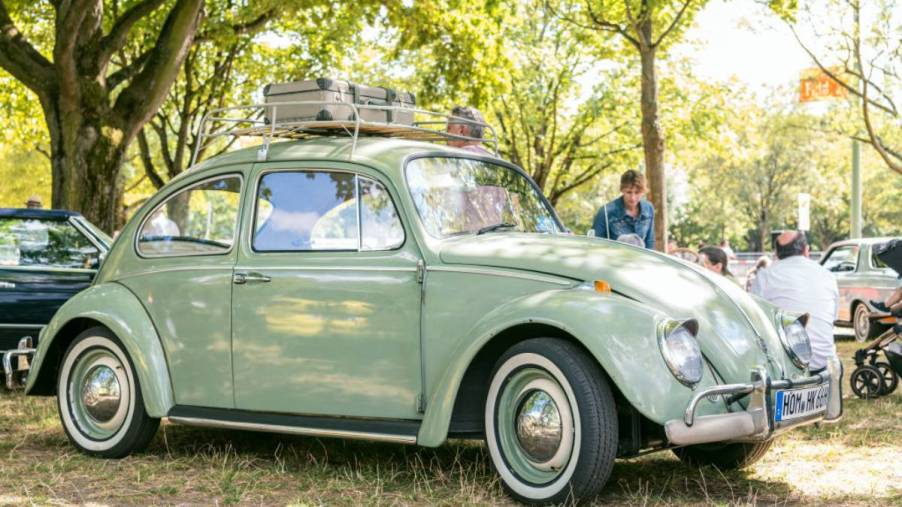
Was the Beetle the First Car Volkswagen Ever Made?
Of all the vehicles produced over the years, none may be more iconic than the Volkswagen Beetle. This charming little car has always been chock-full of personality. And while Herbie: The Love Bug may have solidified its place in America’s heart, the Beetle has an even richer history to share.
The VW Beetle is the most manufactured car of all time. Over the years, 21,529,464 units were made, with 1971 being its most popular year, with 1.7 million models rolling off the line. But one of the most common questions related to this beloved car is this—was the Beetle Volkswagen’s first production car? We dove into the details of the Beetle, pre-World War II, aiming to find out more.
The history of the Volkswagen KdF-Wagen
The world-famous Volkswagen Beetle was first called the KdF-Wagen. And it was Adolf Hitler who named it during a speech he gave at Germany’s Wolfsburg car factory. The KdF stood for Kraft durch Freude, which, loosely translated, means “strength through joy.” The very first KdF-Wagen rolled off the line in 1938.
This car was the first VW, and it came with the signature rounded top and the air-cooled, rear-mounted flat-four engine configuration of VW Beetle fame. It was designed to be simplistic with fewer parts. Ideally, this design would make it easier to maintain and fix.
The KdF-Wagen was put through a barrage of testing before it launched, too. In fact, it was wind-tunnel tested in the same facility where military personnel would test new aircraft aerodynamics. And this little, simple car logged more than 1,800,000 miles of testing before garnering production approval.
A transformation that made it a global sensation
Fit My Car describes the transformation of the Volkswagen KdF-Wagen to the “bucket car,” a modified version intended for military use during World War II. It was called the Kubelwagen, and a more amphibious version was produced called the Schwimmwagen. But it didn’t officially become the Beetle until after the war ended.
After the war, the Wolfsburg production plant resumed under the charge of Major Ivan Hirst of British command. The British Military ordered 20,000 cars off the line. And the KdF-Wagen officially became the Volkswagen Type 1, more commonly known now as the beloved Beetle.
The evolution of the Volkswagen Beetle today
The Volkswagen Beetle landed shoreside in the U.S. in 1949. But it wasn’t earning attention yet, and only two models were sold that year, as VW explained. In 1950, the Volkswagen Type 2 came out and featured the engine in the rear of the vehicle. And it only took a few years for the buzz to catch on, too. The VW Beetle was affordable, roomy, and fun to drive. It also was relatively cheap to maintain and repair, which spoke to millions of car-buying consumers at the time.
The Volkswagen Super Beetle was introduced in 1971, making it even more popular among consumers, with more room and more power. And it became a pop-culture sensation on the silver screen as Herbie: The Love Bug, with more than a dozen movies. The Beetle’s iconic look and simplicity never seemed to go out of style with each passing decade.
The very last Volkswagen Beetle first-gen Type-1 rolled off the production line on July 30, 2003, and was amply named “El Rey,” which means “The King.” This car is on display at the company’s museum today in Wolfsburg, Germany. The final production of The New Beetle rolled off the production line in 2019. And despite being out of production today, it’s still a popular car among consumers. You’ll still see these stylishly curved domes as hardtops and convertibles, still fun and chock-full of personality.
As the first Volkswagen car, you could buy a new Beetle for around $1,200. Today, you can still buy used models with plenty of road life left, anywhere from $6,000 to $43,000.


